
Universidade Fernando Pessoa
Porto, Portugal

Seismic-Sequential Stratigraphy
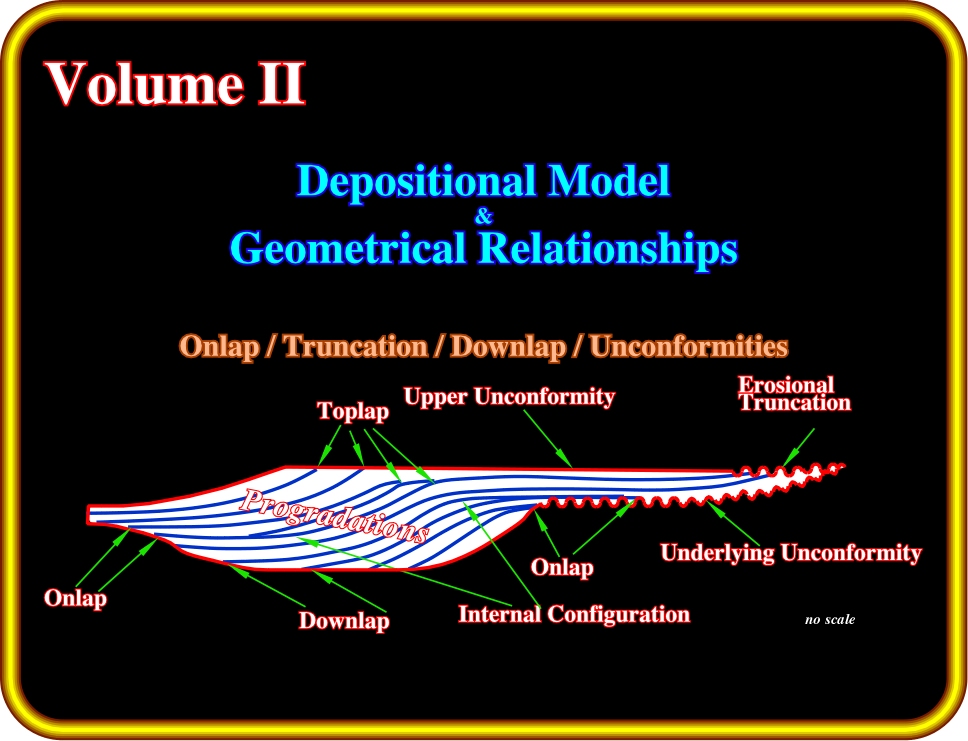
Time stratigraphy is established by physical stratal patterns of the rocks, on the ground, on electrical logs and on seismic lines.
"Physical stratal patterns of the rocks"
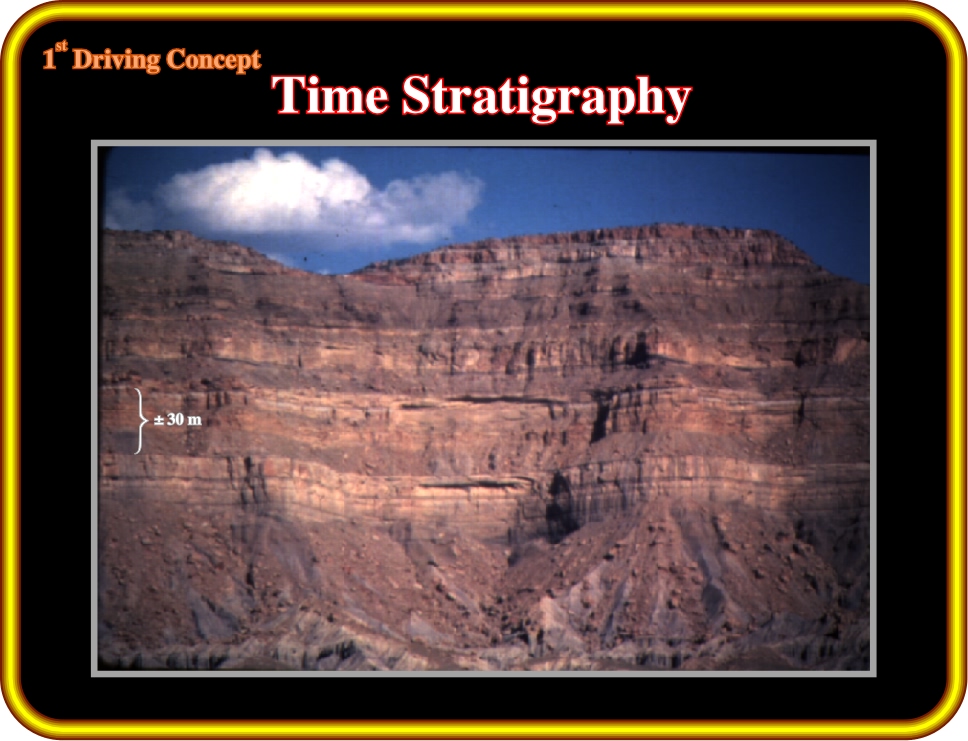
Plate 125 -As illustrated on this photograph, physical strata patterns strongly suggest that depositional systems are cyclic. Actually, since the advent of Geology, as a natural science, geologists advanced several hypotheses to explain such cyclicity. Eustacy has always been considered as the most likely cause of the cyclicity of depositional systems (de Maillet, Lavoisier, Lemoine, Burrolet and, recently, Exxon’s geologists). Such hypothesis has been tested many times, but, so far, it has resisted quite well to the refutation tests. Admittedly, eustacy, that is to say, the global sea level changes can apply just to sediments deposited under marine influence. Nonmarine sediments, particularly those laid down landward of the bayline are out of the scope of eustacy.
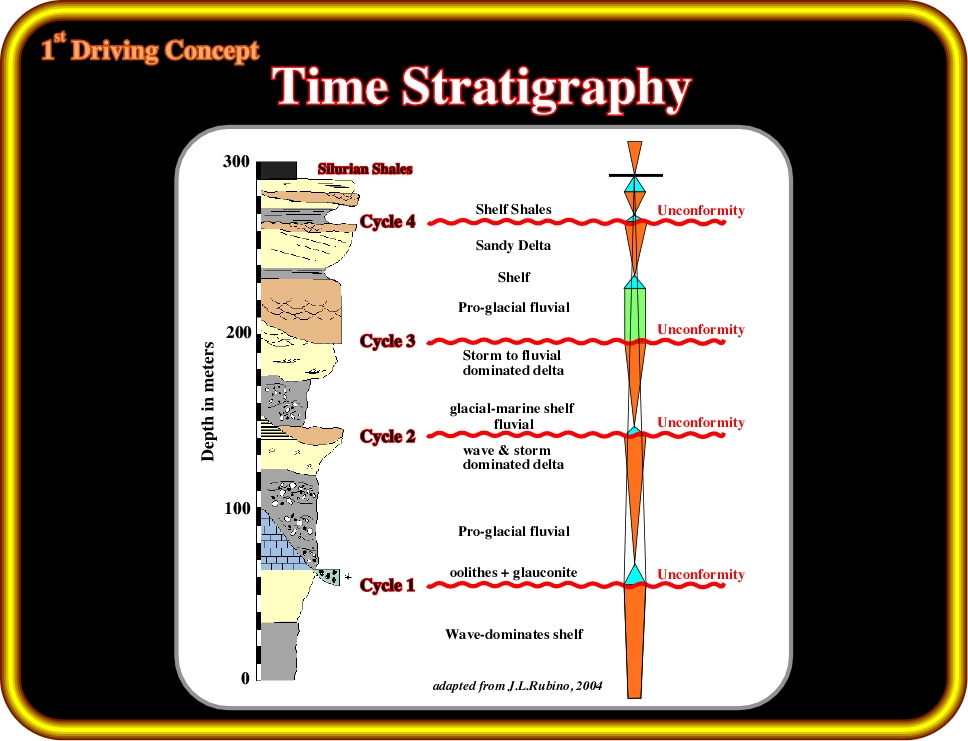
Plate 126- The cyclicity of the depositional systems recognized on the ground (Plate 125) is, naturally, depicted on stratigraphic cross-sections. The section illustrated on this plate comes from an Upper Ordovician glacial interval, that is to say, from an environment in which eustacy is meaningful. In spite of that, four stratigraphic cycles are pictured. They are bounded by erosional surfaces, which truncate the underlying strata putting in vertical abnormal superposition sediments with facies (lithology) and environments quite different. In addition, within each cycle, it is possible to identify a lower thinning and fining upward package, which is overlain by a coarsening and thickening upward package. Eustacy, in this particular example (glacial deposit), cannot be directly invoked as the main cause of the cyclicity. The landward and seaward movement of the glacier is probably the more likely cause of the observed cyclicity, with glacial erosion bounding the cycles. As we will see later, eustacy explains quite well the cyclicity observed in marine sediments. However, in turbidite depositional systems, deposition takes place when the space available for sedimentation (accommodation) increases (relative sea level rise).
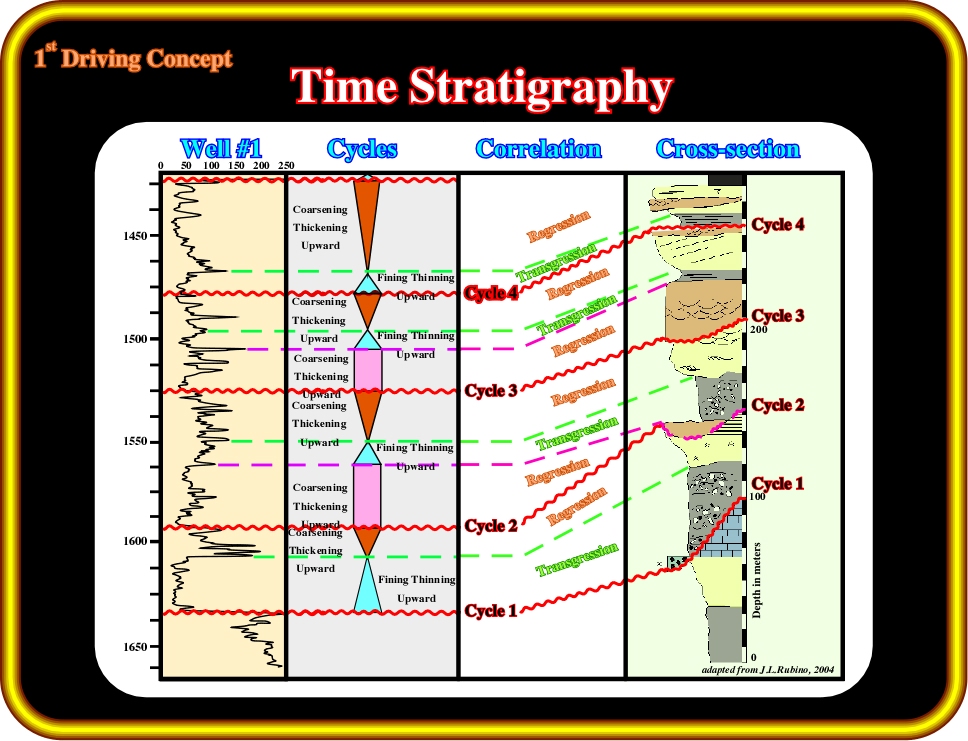
Plate 127 - Admittedly, the cyclicity and stratal patterns of marine sediments are readily recognized on all electric logs. Similarly, in glacial deposition, as illustrated here, the correlation between field stratigraphy and electric logs patterns are difficult to refute. Four cycles, glacial erosions, fining and thinning upward (transgressive) and coarsening and thickening upward (regressive) intervals, identified on the stratigraphic section (Plate 126), are easily recognized on the electric logs. Despite such convincing regional correlations, it is not astonishing that some geologists still hypothesize that eustasy was also active.
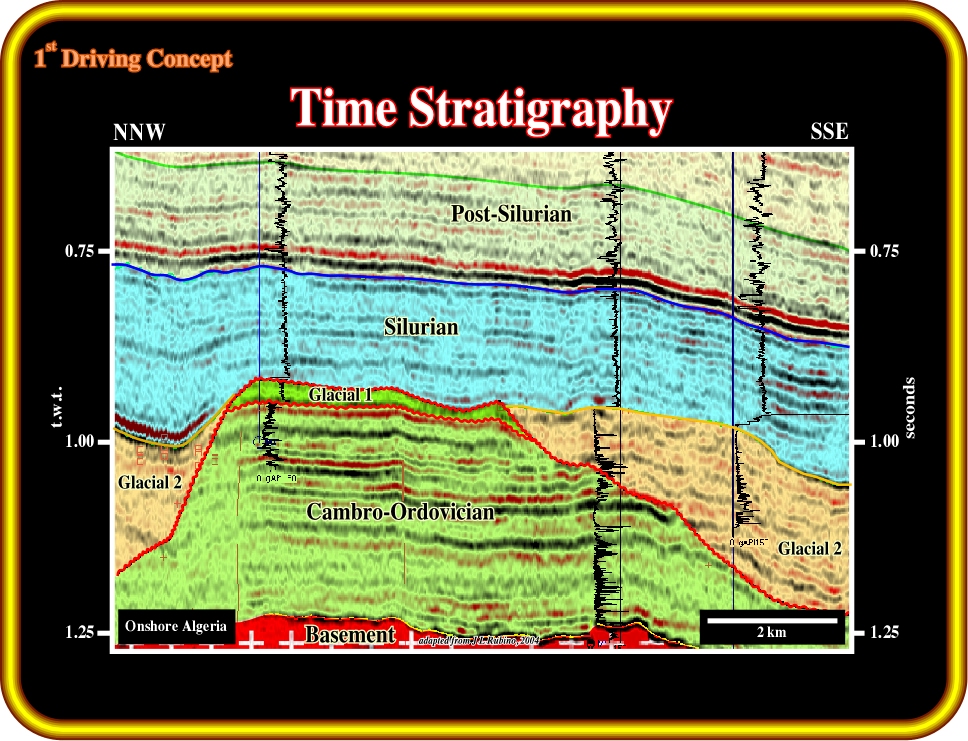
Plate 128 - This seismic line illustrates the time stratigraphy (seismic reflectors are chronostratigraphic lines) and the cyclicity (eustasy) of the depositional systems of onshore Algeria. Time stratigraphy and cyclicity can also be recognized on the electric logs of the wells drilled in the area. The glacial deposits (Upper Ordovician, glacial 1 & 2) depict quite different stratal patterns of the marine deposits (Cambro-Ordovician, Silurian and post-Silurian). Glacial erosional surfaces bounding glacial cycles look like angular unconformities, while the limits between marine geological packages look like eustatic unconformities. The internal configuration of glacial intervals is reflection free, while marine intervals have, roughly, a parallel internal configuration.
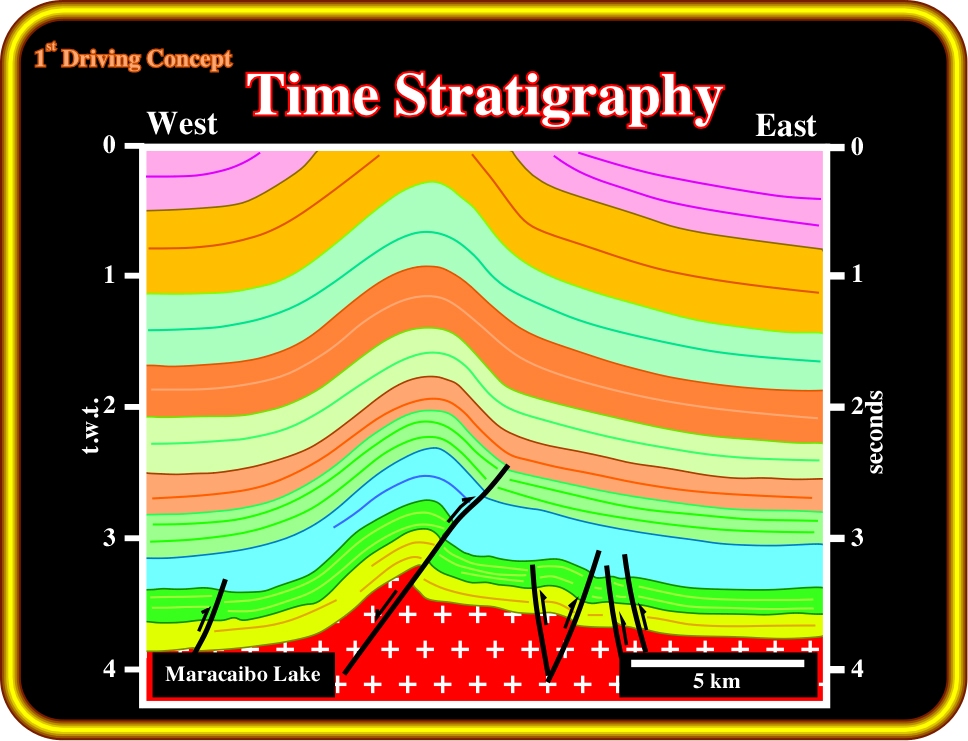
Plate 129 - On this seismic line, from the Maracaibo lake (Venezuela), the seismic reflectors, which correspond to chronostratigraphic lines (interfaces between depositional surfaces), depict the time stratigraphy (not calibrated) and cyclicity of the depositional systems. The colored seismic intervals correspond, roughly, to marine sedimentary packages (continental encroachment subcycles induced by 2nd order eustatic cycles). The internal configuration of the seismic intervals look parallel, at least on this profile. However, it must be noticed that this line is perpendicular to the structural trend and not parallel to the direction of sediment transportation along which geometrical relationships and reflections terminations are true and not apparent.
Seismic lines are a high resolution tool that can be used for determining chronostratigraphy:
"Time lines in rocks"
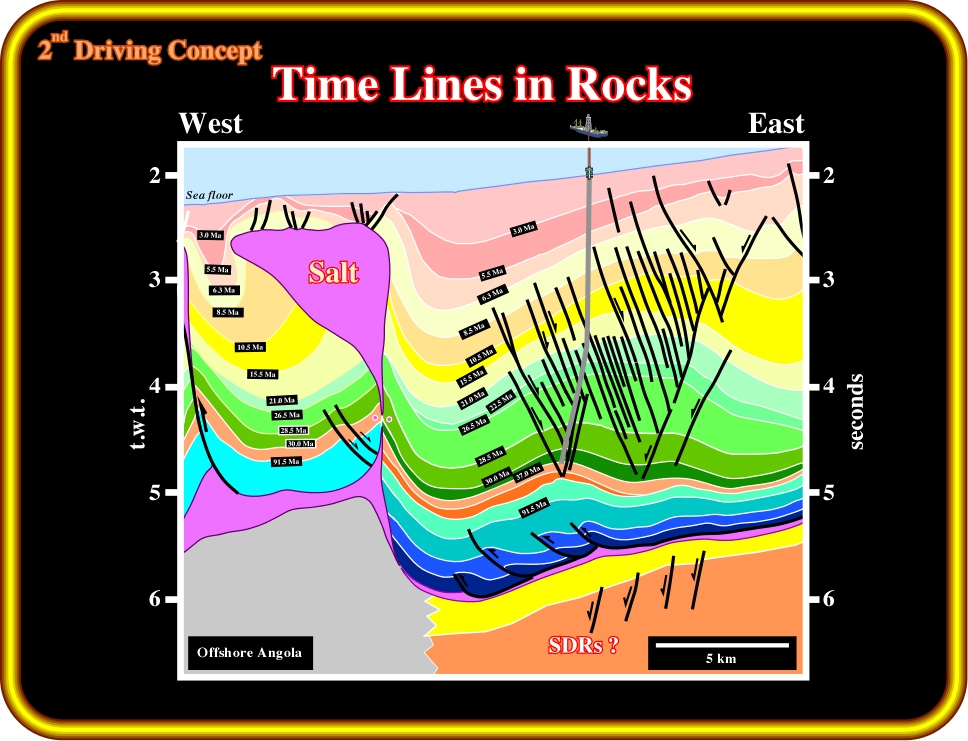
Plate 130 - The results of exploratory wells, or the knowledge of the stratigraphic signature of the area, allow explorationists, and mainly seismic interpreters, to calibrate seismic profiles in time stratigraphy. On this example, taken from deep offshore Angola, the major unconformities bounding the different seismic intervals, and downlap surfaces, are calibrated the according to the stratigraphic signature of the South Atlantic Margins. Notice, on the western part of the line, the pull-up of the bottom of the evaporitic layer induced by the high velocity (17500 feet/second) of the seismic waves in a salt layer.
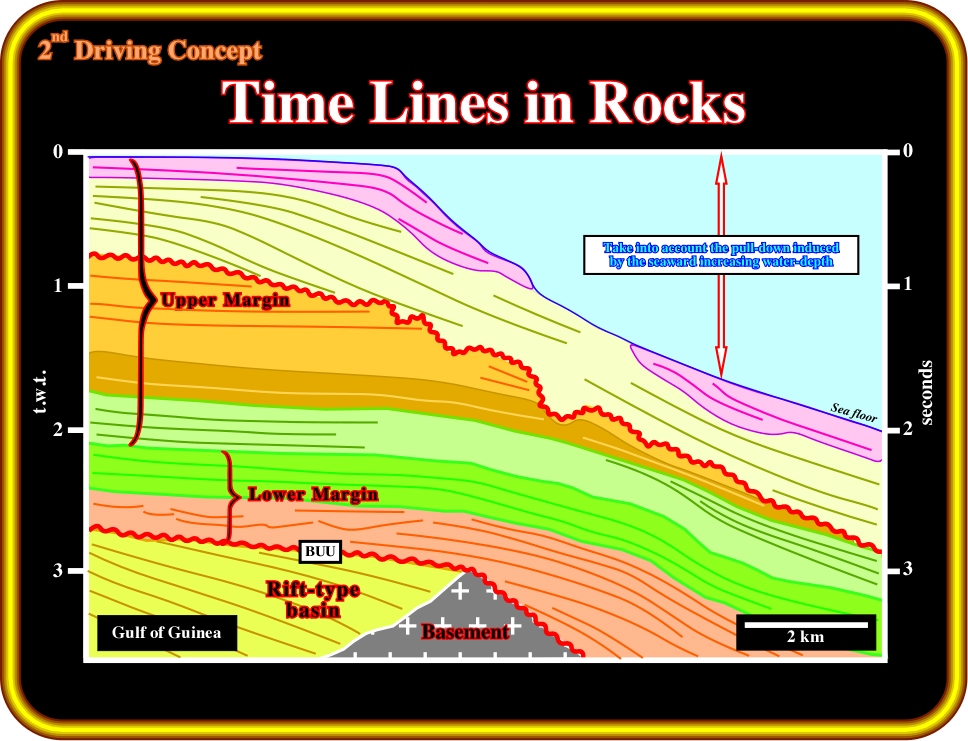
Plate 131 - Here again, it is easy to notice that seismic reflectors follow chronostratigraphic lines. Therefore, time-stratigraphy can be performed using seismic data. On this seismic profile, coming from offshore Nigeria, different seismic packages can be recognized above a granite-gneiss basement. Rift-type basin sediments deposited during the lengthening of the lithosphere, that is to say, laid down before the break-up of Pangea supercontinent, are separated from the margin sediments by an angular unconformity (BUU, Breakup unconformity). On the margin, different sedimentary packages can be recognized. In the upper part, an erosional surface, probably induced by Upper Tertiary glaciation (Oligocene ?), eroded the sedimentary time surfaces creating typically truncated reflection terminations (see later). The lower margin sediments look transgressive, while the upper look regressive. A major non-depositional hiatus is likely between lower and upper parts of the margin.

Plate 132 - When seismic data are of good quality, and with appropriate resolution, as in modern lines of offshore Mahakam (East Borneo, Kalimantan, Indonesia), (i) the stratal patterns, (ii) the geometrical relationships (between seismic markers) and (iii) the seismic surfaces (hypothetical surfaces associated with reflection terminations) allow seismic interpreters to perform quite detailed time stratigraphy and depositional analysis. On this line, for instance, it is utterly easy to see the theoretical disconformity surfaces separating the different seismic packages. Similarly, it is quite evident that certain depositional packages (seismic intervals) were laid down not in aggradation, that is to say, above the previous ones, but much lower on the seaward side. Such geometrical relationships, that we are going to describe and interpret later, correspond to significant relative sea level falls, which displace the depositional coastal systems basinward and downward.
Seismic depositional intervals follow the hierarchy of eustatic cycles. Higher hierarchic stratigraphic intervals as (i) sequence-cycles (ii) systems tracts and (iii) depositional systems (facies), can be individualized in outcrop and, sometimes, on seismic data whenever conditions are favorable.
"Eustatic cycles show a typical hierarchy"
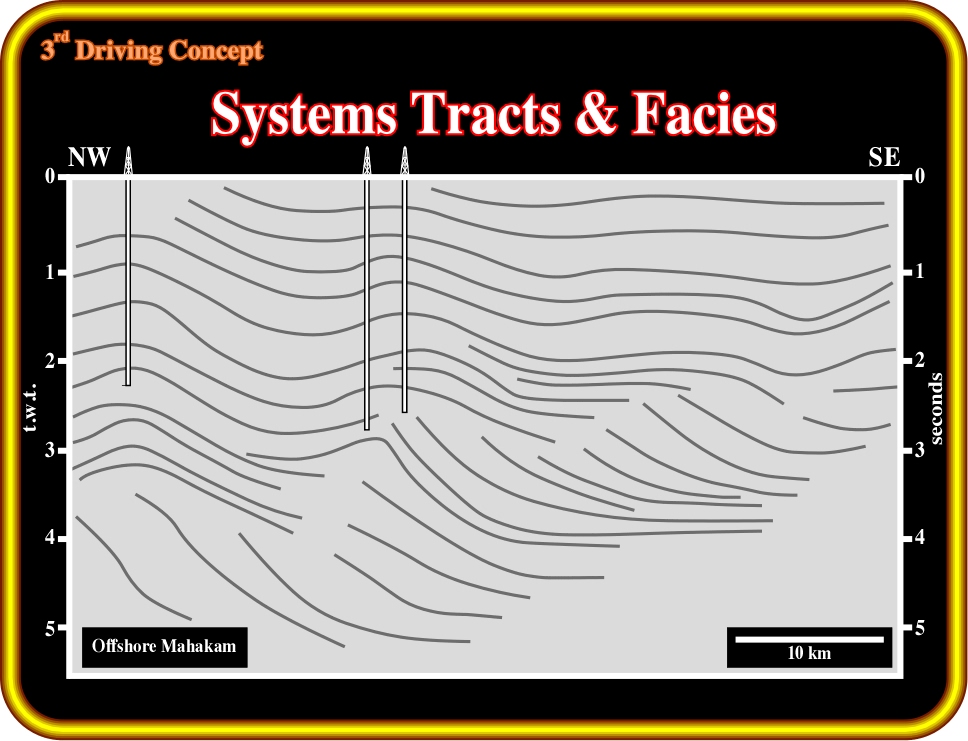
Plate 133 - Theoretically, seismic markers should underline significant contrast in acoustical impedance. In the 60's seismic interpreters, particularly Esso’s geologists expected to recognize, on the seismic lines of Portuguese Guinea, the progradational delta front reservoirs, since their acoustical impedance is much higher than the landward costal silts and seaward prodelta shales. However, the well’s results strongly indicated that the recognized seismic reflectors, follow time lines (depositional surfaces), and not facies lines (lithological changes). Indeed, as it will be shown later, lithological predictions using seismic data require a complete and exhaustive sequential stratigraphic interpretation. Seismic interpreter must pick and map higher hierarchic intervals (systems tract) in order to approach depositional systems, which are characterized by a lithology (facies) and an associated faunal assemblage.
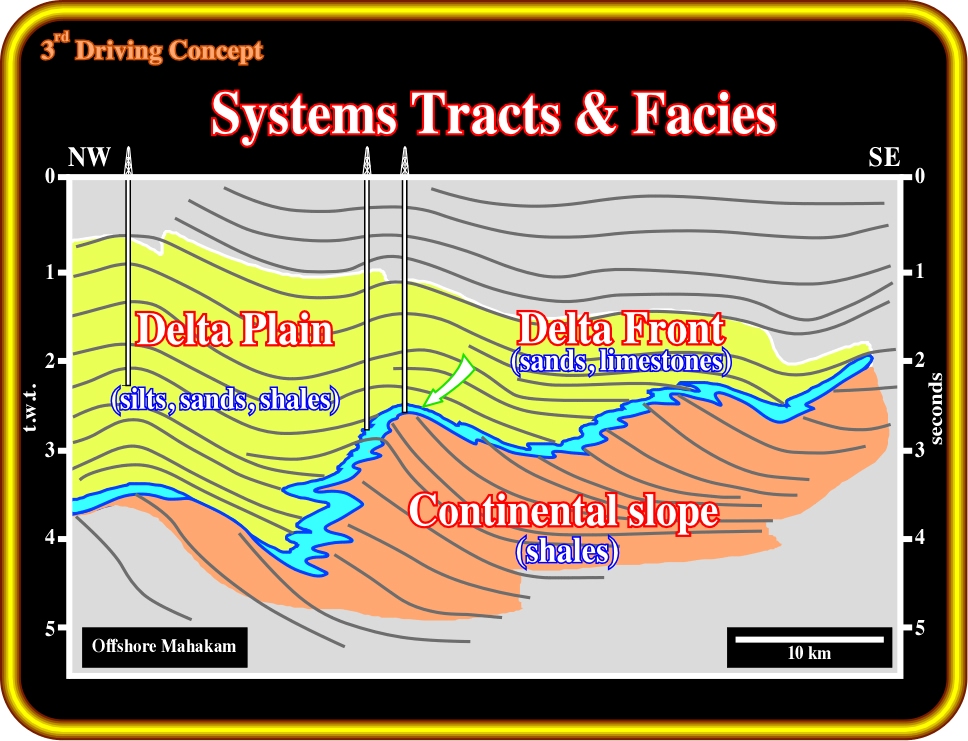
Plate 134 - This environmental interpretation of the seismic line illustrated on Plate 133, based on stratal patterns (seismic patterns) and calibrated by the well results, corroborates the hypothesis that seismic markers follow chronostratigraphic rather than facies lines. On this line, it is quite easy to follow the successive positions of the depositional coastal break that, in this particular instance (basin without continental shelf), coincide with the shelf break. So, one can say that near depositional coastal breaks, delta front sandstones and limestones were likely deposited, while landward, on the coastal plain, silts, sands and shales are predominant. Seaward of the depositional coastal break, on the continental and deltaic slope, slope shales are paramount. Taking into account the facies (lithology), the acoustical impedance contrast should theoretically follow the bleu interval, but as everyone can notice there is not an associated seismic marker (see plate 133). Therefore, lithological predictions, and mainly reservoir-rocks predictions, cannot be made by just looking at the seismic line. They require, as we see later, a sophisticated method that certain explorations call the sequential-stratigraphic approach.
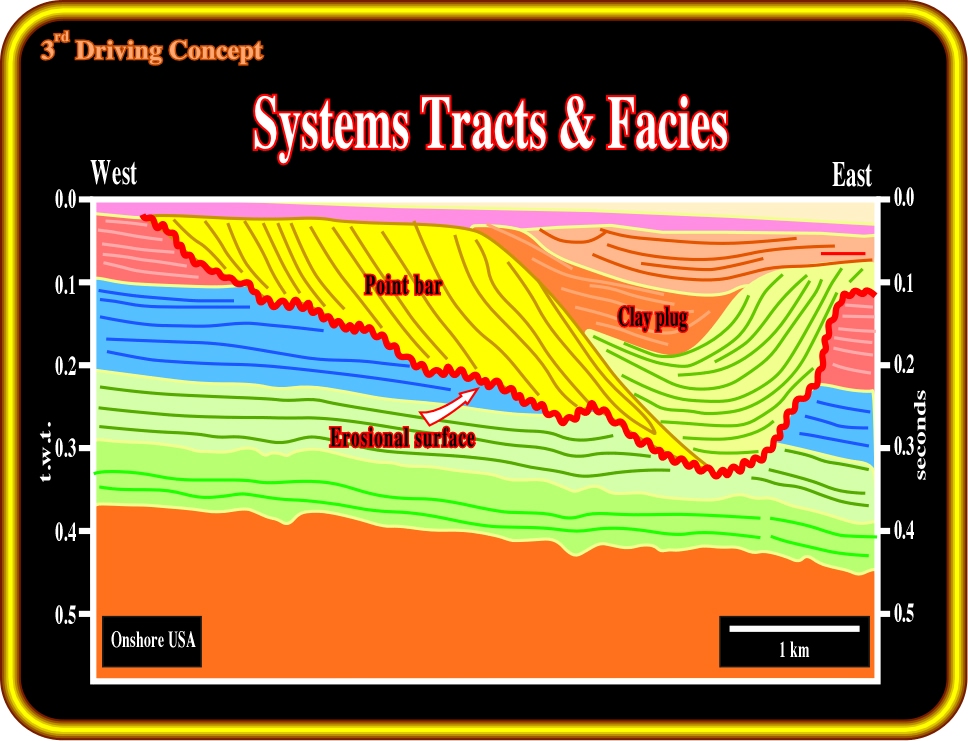
Plate 135 - When nonmarine depositional systems are suspected, or recognized on seismic lines, as illustrated above, lithological predictions, using seismic data, still are possible. This is particularly true when the nonmarine depositional systems are under the influence of relative sea level variations, that is to say, where eustasy is active. These types of nonmarine sediments are deposited landward of the depositional coastal break, but seaward of the bayline. However, in order to make reasonable predictions, a full understanding of the depositional systems is required. On this line, assuming that the erosional surface was induced by the rupture of the equilibrium profile of a river, the stratal patterns of the filling intervals are easily interpreted, in lithological terms, by applying the meander belt and point bar geological models. Briefly speaking, seismic interpreters attempting in advanced lithological prediction must imperatively know, a priori, the sedimentological models: Theory precedes Observation.